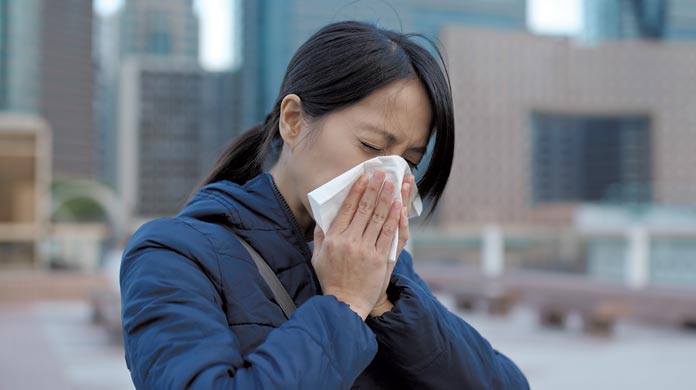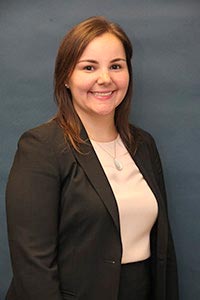
Article contributed by Maria Louisa Bianco, Ellenoff Grossman & Schole LLP
On April 3, 2020, New York enacted a statewide permanent sick leave law that will remain in effect after the current pandemic and its temporary protections have expired. No one paid much attention because New York was at the height of the pandemic at the time, but now it’s time to understand this new employer requirement.
Beginning September 30, 2020, employers of all sizes throughout New York State will be required to provide a certain amount of either paid or unpaid sick leave to all employees for certain medical and safety-related reasons. Employees may not begin using the accrued sick leave until January 1, 2021.
While employers in New York City and Westchester have been required to provide sick leave for several years, those employers will now be required to comply with the state law as well as the local laws. The New York State sick leave is similar to the NYC and Westchester sick leave laws, however, larger employers in those locations will be required next year to increase paid sick leave from 40 hours to 56 hours. Also, the state sick leave law will have a significant impact on employers in Long Island and upstate who have not previously been obligated to provide sick leave. Employers throughout New York who already have an equal or more generous paid sick leave or paid time off policy will not be required to provide additional leave.
How Much Sick Leave and at What Rate?
The amount of sick leave an employer must provide and whether it must be paid is determined by the number of employees. The state law does not specify whether the number of employees is within New York state or the total number of employees. Employers with 99 or fewer employees must provide 40 hours of sick leave. If the employer has 4 or fewer employees and a net income of $1 million or less in the previous tax year, the sick leave may be unpaid. Employers with 4 or fewer employees and a net income of greater than $1 million in the previous tax year and employers with 5 to 99 employees, regardless of income, must provide paid sick leave. Employers with more than 100 employees must provide 56 hours of paid sick leave. An employer’s size is determined by calendar year (January 1 to December 31) but there is no further guidance. An employer must pay employees at their regular rate of pay or applicable minimum wage, whichever is greater.
What Can Sick Leave be Used for?
Sick leave can be used for mental or physical illness, injury or health condition of employee or employee’s family member, regardless of whether such illness, injury or health condition has been diagnosed or requires medical care at the time that such employee requests leave. Sick leave can also be used for the diagnosis, care or treatment of a mental or physical illness, injury or health condition of, or need for medical diagnosis of, or preventive care for, such employee or such employee’s family member. Finally, sick leave can be used for an absence for work for the employee or a covered family member to access services or assistance related to being a victim of domestic violence, a sexual offense, stalking or human trafficking as those terms are defined by New York law. The state sick leave law defines family member as employee’s (1) child, (2) spouse, (3) domestic partner, (4) parent, (5) sibling, (6) grandchild, (7) grandparent, and (8) the child or parent of an employee’s spouse or domestic partner.
While an employer can set a minimum increment for use of leave, the minimum increment cannot be more than 4 hours.
How is Sick Leave Accrued?
Employees accrue sick leave at the rate of no less than 1 hour for every 30 hours worked. Employees begin accruing sick leave at the start of employment or on the effective date of the law, i.e., September 30, 2020, whichever is later. For the purpose of using and accruing leave, a calendar year means the 12-month period from January 1 through December 31, or a regular and consecutive 12-month period, as determined by the employer.
The state sick leave requires employers to carryover unused but accrued sick leave to the following year. However, a smaller employer (fewer than 100 employees) may limit the use of sick leave to 40 hours per calendar year and a larger employer (100 or more employees) may limit the use of sick leave to 56 hours per calendar year. Employers are not required to pay accrued sick leave upon separation from employment for any reason.
Recordkeeping
[pro_ad_display_adzone id=”6840″ align=”right” padding=”10″] Ideally, employers will include an employee’s accrued and unused sick leave on payroll records. Employers must provide a summary of leave accrued and used to employees within 3 business days of any request and retain records relating to sick leave for 6 years.
Effect on Current Statutes and Policies
The state sick leave does not replace or preempt any existing city or county-level paid sick leave laws. As such, employers already covered by the New York City Earned Safe and Sick Time Act or the Westchester Earned Sick Leave law must continue to provide employees with leave that meets or exceeds the requirements of both the statewide and local laws. Employers that already have an equal or more generous paid sick leave or paid time off policy, with regard to amount of leave, accrual of leave, carryover and use requirements, are not required to provide additional sick leave.
Any employer with a unionized workforce should be aware that the state sick leave law does provide that a collective bargaining agreement (“CBA”) entered into, on or after the effective date of the law, i.e. September 30, 2020, may negotiate terms and conditions of sick leave different from the provisions of this section provided that the CBA specifically acknowledges the sick leave law.
Retaliation Prohibited
Finally, discriminating or retaliating against or in any way penalizing employees for exercising sick leave rights is prohibited.
Additional guidance on the state law from the Department of Labor is anticipated. Employers with sick leave policies should have them reviewed and revised for compliance with state sick leave and those without sick leave policies should prepare to implement them prior to September 30, 2020.
 Maria Louisa Bianco is an Labor & Employment Associate at Ellenoff Grossman & Schole LLP. She represents and advises clients in a variety of labor and employment matters. Her experience includes defending clients in federal and state court as well as before various governmental agencies against claims of wage and hour violations and employment discrimination. Ms. Bianco also counsels employers of all sizes on workplace issues such as proper pay practice, employee classification, discipline, termination, and leave. Maria Louisa Bianco (MBianco@egsllp.com) can be reached via phone at
Maria Louisa Bianco is an Labor & Employment Associate at Ellenoff Grossman & Schole LLP. She represents and advises clients in a variety of labor and employment matters. Her experience includes defending clients in federal and state court as well as before various governmental agencies against claims of wage and hour violations and employment discrimination. Ms. Bianco also counsels employers of all sizes on workplace issues such as proper pay practice, employee classification, discipline, termination, and leave. Maria Louisa Bianco (MBianco@egsllp.com) can be reached via phone at
212-370-1300.























